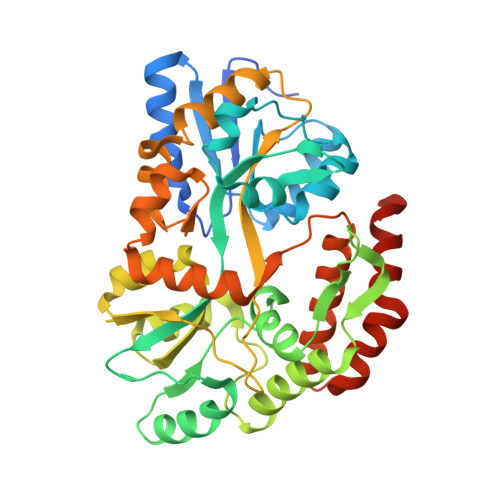Structure-function studies of the magnetite-biomineralizing magnetosome-associated protein MamC.
Nudelman, H., Valverde-Tercedor, C., Kolusheva, S., Perez Gonzalez, T., Widdrat, M., Grimberg, N., Levi, H., Nelkenbaum, O., Davidov, G., Faivre, D., Jimenez-Lopez, C., Zarivach, R.(2016) J Struct Biol 194: 244-252
- PubMed: 26970040
- DOI: https://doi.org/10.1016/j.jsb.2016.03.001
- Primary Citation of Related Structures:
5I69 - PubMed Abstract:
Magnetotactic bacteria are Gram-negative bacteria that navigate along geomagnetic fields using the magnetosome, an organelle that consists of a membrane-enveloped magnetic nanoparticle. Magnetite formation and its properties are controlled by a specific set of proteins. MamC is a small magnetosome-membrane protein that is known to be active in iron biomineralization but its mechanism has yet to be clarified. Here, we studied the relationship between the MamC magnetite-interaction loop (MIL) structure and its magnetite interaction using an inert biomineralization protein-MamC chimera. Our determined structure shows an alpha-helical fold for MamC-MIL with highly charged surfaces. Additionally, the MamC-MIL induces the formation of larger magnetite crystals compared to protein-free and inert biomineralization protein control experiments. We suggest that the connection between the MamC-MIL structure and the protein's charged surfaces is crucial for magnetite binding and thus for the size control of the magnetite nanoparticles.
Organizational Affiliation:
Department of Life Sciences and the National Institute for Biotechnology in the Negev, Ben-Gurion University of the Negev, Beer Sheva, Israel.





















